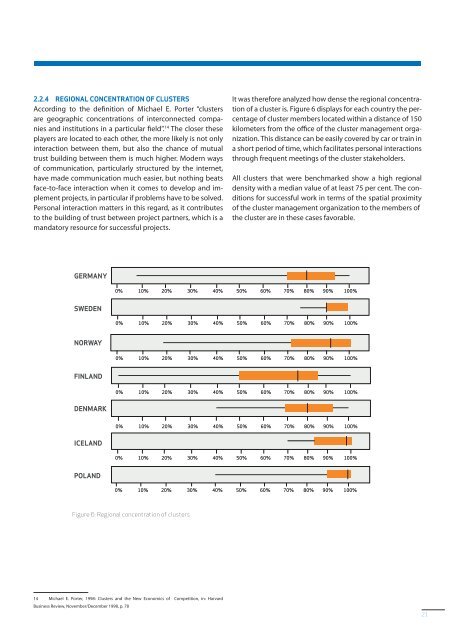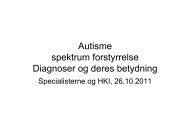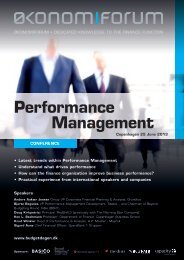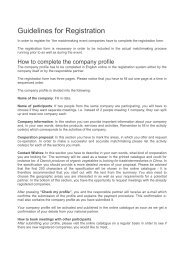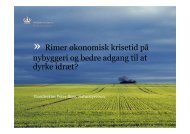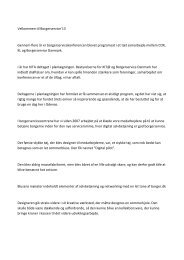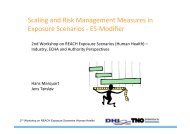Clusters are individuals - VDI/VDE-IT
Clusters are individuals - VDI/VDE-IT
Clusters are individuals - VDI/VDE-IT
Create successful ePaper yourself
Turn your PDF publications into a flip-book with our unique Google optimized e-Paper software.
2.2.4 REGIONAL CONCENTRATION OF CLUSTERS<br />
According to the definition of Michael E. Porter “clusters<br />
<strong>are</strong> geographic concentrations of interconnected companies<br />
and institutions in a particular field”. 14 The closer these<br />
players <strong>are</strong> located to each other, the more likely is not only<br />
interaction between them, but also the chance of mutual<br />
trust building between them is much higher. Modern ways<br />
of communication, particularly structured by the internet,<br />
have made communication much easier, but nothing beats<br />
face-to-face interaction when it comes to develop and implement<br />
projects, in particular if problems have to be solved.<br />
Personal interaction matters in this regard, as it contributes<br />
to the building of trust between project partners, which is a<br />
mandatory resource for successful projects.<br />
It was therefore analyzed how dense the regional concentration<br />
of a cluster is. Figure 6 displays for each country the percentage<br />
of cluster members located within a distance of 150<br />
kilometers from the office of the cluster management organization.<br />
This distance can be easily covered by car or train in<br />
a short period of time, which facilitates personal interactions<br />
through frequent meetings of the cluster stakeholders.<br />
All clusters that were benchmarked show a high regional<br />
density with a median value of at least 75 per cent. The conditions<br />
for successful work in terms of the spatial proximity<br />
of the cluster management organization to the members of<br />
the cluster <strong>are</strong> in these cases favorable.<br />
GERMANY<br />
0% 10% 20% 30% 40% 50% 60% 70% 80% 90% 100%<br />
SWEDEN<br />
0% 10% 20% 30% 40% 50% 60% 70% 80% 90% 100%<br />
NORWAY<br />
0% 10% 20% 30% 40% 50% 60% 70% 80% 90% 100%<br />
FINLAND<br />
0% 10% 20% 30% 40% 50% 60% 70% 80% 90% 100%<br />
DENMARK<br />
0% 10% 20% 30% 40% 50% 60% 70% 80% 90% 100%<br />
ICELAND<br />
0% 10% 20% 30% 40% 50% 60% 70% 80% 90% 100%<br />
POLAND<br />
0% 10% 20% 30% 40% 50% 60% 70% 80% 90% 100%<br />
Figure 6: Regional concentration of clusters<br />
14 Michael E. Porter, 1998: <strong>Clusters</strong> and the New Economics of Competition, in: Harvard<br />
Business Review, November/December 1998, p. 78<br />
21


